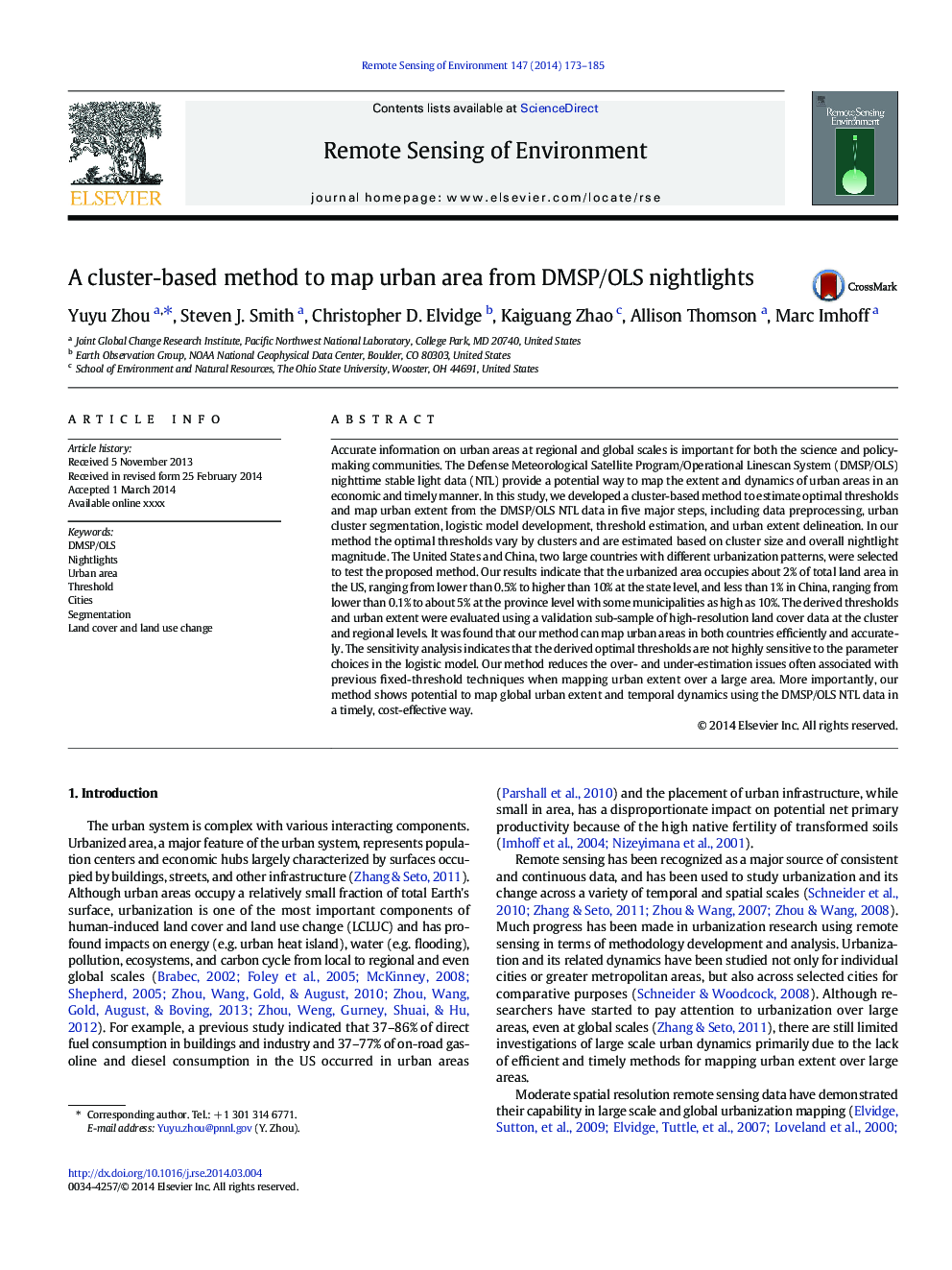| Article ID | Journal | Published Year | Pages | File Type |
|---|---|---|---|---|
| 6346733 | Remote Sensing of Environment | 2014 | 13 Pages |
Abstract
Accurate information on urban areas at regional and global scales is important for both the science and policy-making communities. The Defense Meteorological Satellite Program/Operational Linescan System (DMSP/OLS) nighttime stable light data (NTL) provide a potential way to map the extent and dynamics of urban areas in an economic and timely manner. In this study, we developed a cluster-based method to estimate optimal thresholds and map urban extent from the DMSP/OLS NTL data in five major steps, including data preprocessing, urban cluster segmentation, logistic model development, threshold estimation, and urban extent delineation. In our method the optimal thresholds vary by clusters and are estimated based on cluster size and overall nightlight magnitude. The United States and China, two large countries with different urbanization patterns, were selected to test the proposed method. Our results indicate that the urbanized area occupies about 2% of total land area in the US, ranging from lower than 0.5% to higher than 10% at the state level, and less than 1% in China, ranging from lower than 0.1% to about 5% at the province level with some municipalities as high as 10%. The derived thresholds and urban extent were evaluated using a validation sub-sample of high-resolution land cover data at the cluster and regional levels. It was found that our method can map urban areas in both countries efficiently and accurately. The sensitivity analysis indicates that the derived optimal thresholds are not highly sensitive to the parameter choices in the logistic model. Our method reduces the over- and under-estimation issues often associated with previous fixed-threshold techniques when mapping urban extent over a large area. More importantly, our method shows potential to map global urban extent and temporal dynamics using the DMSP/OLS NTL data in a timely, cost-effective way.
Related Topics
Physical Sciences and Engineering
Earth and Planetary Sciences
Computers in Earth Sciences
Authors
Yuyu Zhou, Steven J. Smith, Christopher D. Elvidge, Kaiguang Zhao, Allison Thomson, Marc Imhoff,
